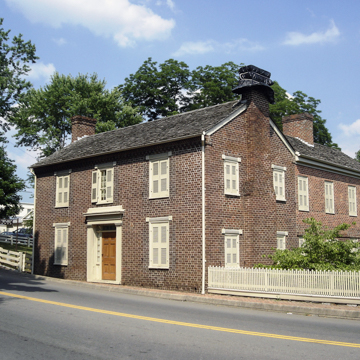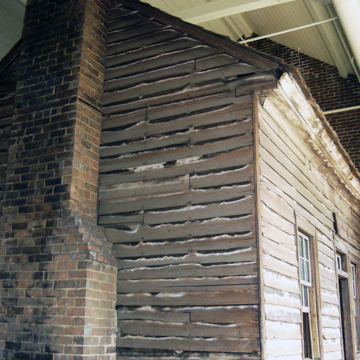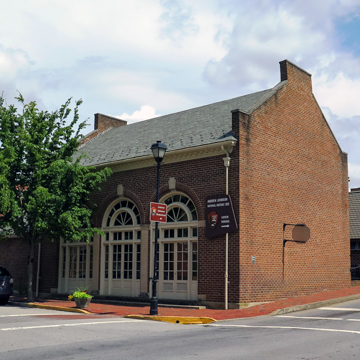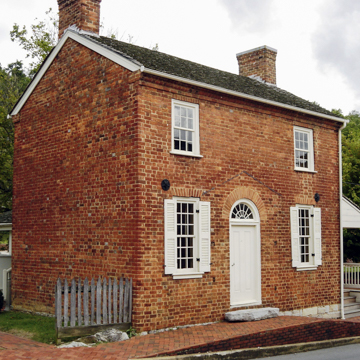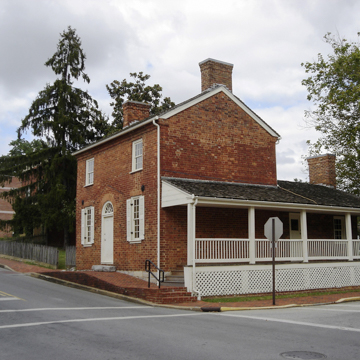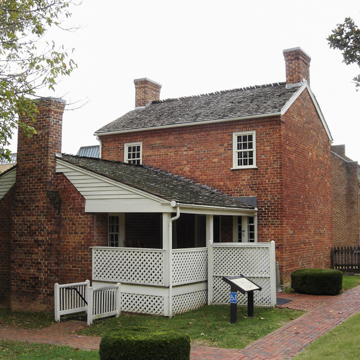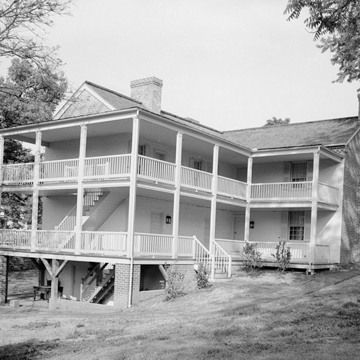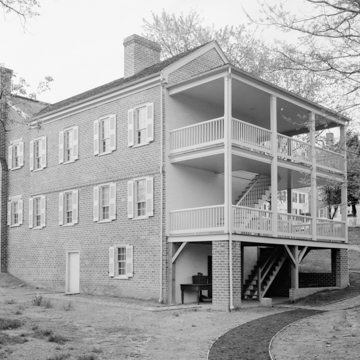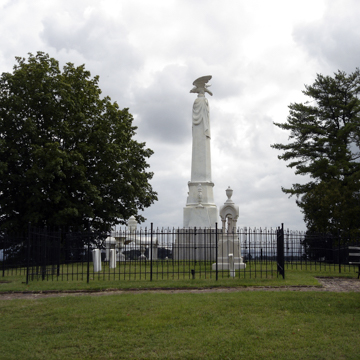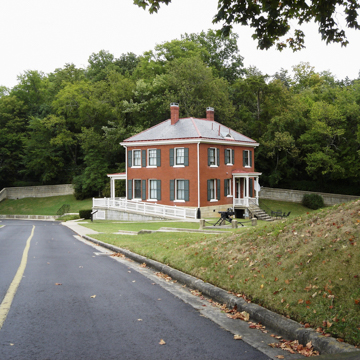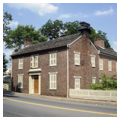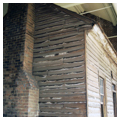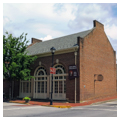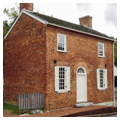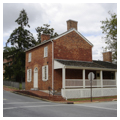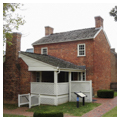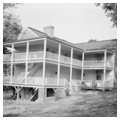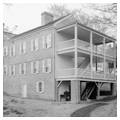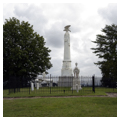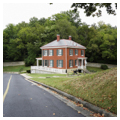You are here
Andrew Johnson National Historic Site
The Andrew Johnson National Historic Site in Greeneville, Tennessee consists of four properties associated with the seventeenth president of the United States, who took the oath of office after the assassination of Abraham Lincoln. Johnson’s efforts to reunite the nation in the post–Civil War years led to disagreements with Congress and to his impeachment in 1868. Though acquitted, Johnson served only one term as president. He returned to Washington in early 1875 to serve again as a U.S. Senator from Tennessee (as he had until Lincoln tapped him for Vice President) but his time in office was cut short by his death that July.
Four properties, today all owned by the National Park Service (NPS), comprise the Andrew Johnson National Historic Site. These properties are near one another and include the Tailor Shop where Johnson worked as a tailor in the 1830s; the Early Home, his residence during the 1830s and 1840s; the Johnson Homestead, which was purchased by him in 1851 and where he lived before and after his presidency; and the National Cemetery and associated caretaker’s/superintendent’s lodge.
The earliest building in Greeneville with a connection to Johnson is the Tailor Shop, which the future politician purchased in 1830. A one-story, one-room frame structure with a brick chimney, the Tailor Shop stands today enclosed by the Memorial Building, which was erected shortly after the State of Tennessee purchased the shop in 1922. Designed by the Knoxville firm of Barber and McMurry, the one-and-one-half-story Colonial Revival Memorial Building has a slate gable roof and large arched multi-light windows on the north and south sides, allowing visitors to view the Tailor Shop within.
Across the street is the “Early Home,” where Johnson and his family lived from the 1830s until they moved to the Johnson Homestead. The Early Home is a two-story Flemish bond brick residence with a one-story ell and low-pitched gable roof sheathed in wood shingles. Built in the Federal style, the Early Home features a traceried fanlight over the entrance, double-hung windows, molded brick cornice, and jack arches.
A few blocks away is the Johnson Homestead, built in 1848 and purchased by Johnson in 1851. The house served as Johnson’s primary residence until his death and is the property most closely associated with his rise to political prominence. The Flemish bond brick building is two stories high at the front along Main Street and three stories high at the rear. Like the Early Home, this building has a low-pitched gable roof sheathed in wood shingles. The Greek Revival entrance has sidelights and a transom and is capped by a wood entablature. Multi-light windows with functional shutters and molded lintels are located on the front and sides. At the rear is a two-story wood porch.
Following his death in 1875, Johnson was buried on property heowned outside of Greeneville, then known as Signal Hill. Three years later, a28-foot-tall marble monument was erected on the site. Capped by an eagle, globe, and flag, it marked the graves of Johnson and his wife, Elizabeth McCardle Johnson, who died the same year as her husband. Known since then as Monument Hill, this was the first property associated with the former president to be acquired and preserved. In 1906 a National Cemetery was established at Monument Hill. The War Department was managing the site in 1909 when a two-story brick caretaker’s residence was built. That foursquare hipped-roof building is attributed to Montgomery C. Meigs, Quartermaster General of the U.S. Army and architect for numerous significant federal projects. A nearly identical lodge, designed by the War Department in 1906, stands at the Gettysburg National Cemetery.
The four Greenville properties associated with Johnson came under the management of the National Park Service by Presidential Proclamation on April 27, 1942, when Franklin D. Roosevelt established the Andrew Johnson National Monument. During the second half of the twentieth century, the NPS restored all of the historic properties to reflect the time when Johnson lived here.
References
“Andrew Johnson House,” Greene County, Tennessee. Historic American Buildings Survey, National Park Service, U.S. Department of the Interior, c. 1960. From Prints and Photographs Division, Library of Congress (HABS TENN 30).
“Andrew Johnson National Cemetery,” Greene County, Tennessee. Historic American Landscapes Survey, National Park Service, U.S. Department of the Interior, 2012. From Prints and Photographs Division, Library of Congress (HALS No. TN-6).
“Andrew Johnson National Cemetery, Andrew Johnson National Historic Site,” Greene County, Tennessee. National Park Service Cultural Landscapes Inventory, 2009. On file at the Tennessee Historical Commission, Nashville, Tennessee.
Binkley, Cameron. Andrew Johnson National Historic Site Administrative History. Cultural Resources, Southeast Region, National Park Service, 2008.
Carroll, Maureen, and Jill Hanson, “Andrew Johnson National Historic Site (Additional Documentation),” Greene County, Tennessee. National Register of Historic Places Registration Form, 1995. National Park Service, U.S. Department of the Interior, Washington, D.C.
Lawing, Hugh A., “Andrew Johnson National Historic Site,” Greene County, Tennessee. National Register of Historic Places Registration Form, 1976. National Park Service, U.S. Department of the Interior, Washington, DC.
Lawing, Hugh A., “Andrew Johnson Visitor Center Complex,” Greene County, Tennessee. National Register of Historic Places Registration Form, 1974. On file at the Tennessee Historical Commission, Nashville, Tennessee.
Manufacturer's Record81 (March 25, 1922): 91.
Writing Credits
If SAH Archipedia has been useful to you, please consider supporting it.
SAH Archipedia tells the story of the United States through its buildings, landscapes, and cities. This freely available resource empowers the public with authoritative knowledge that deepens their understanding and appreciation of the built environment. But the Society of Architectural Historians, which created SAH Archipedia with University of Virginia Press, needs your support to maintain the high-caliber research, writing, photography, cartography, editing, design, and programming that make SAH Archipedia a trusted online resource available to all who value the history of place, heritage tourism, and learning.








